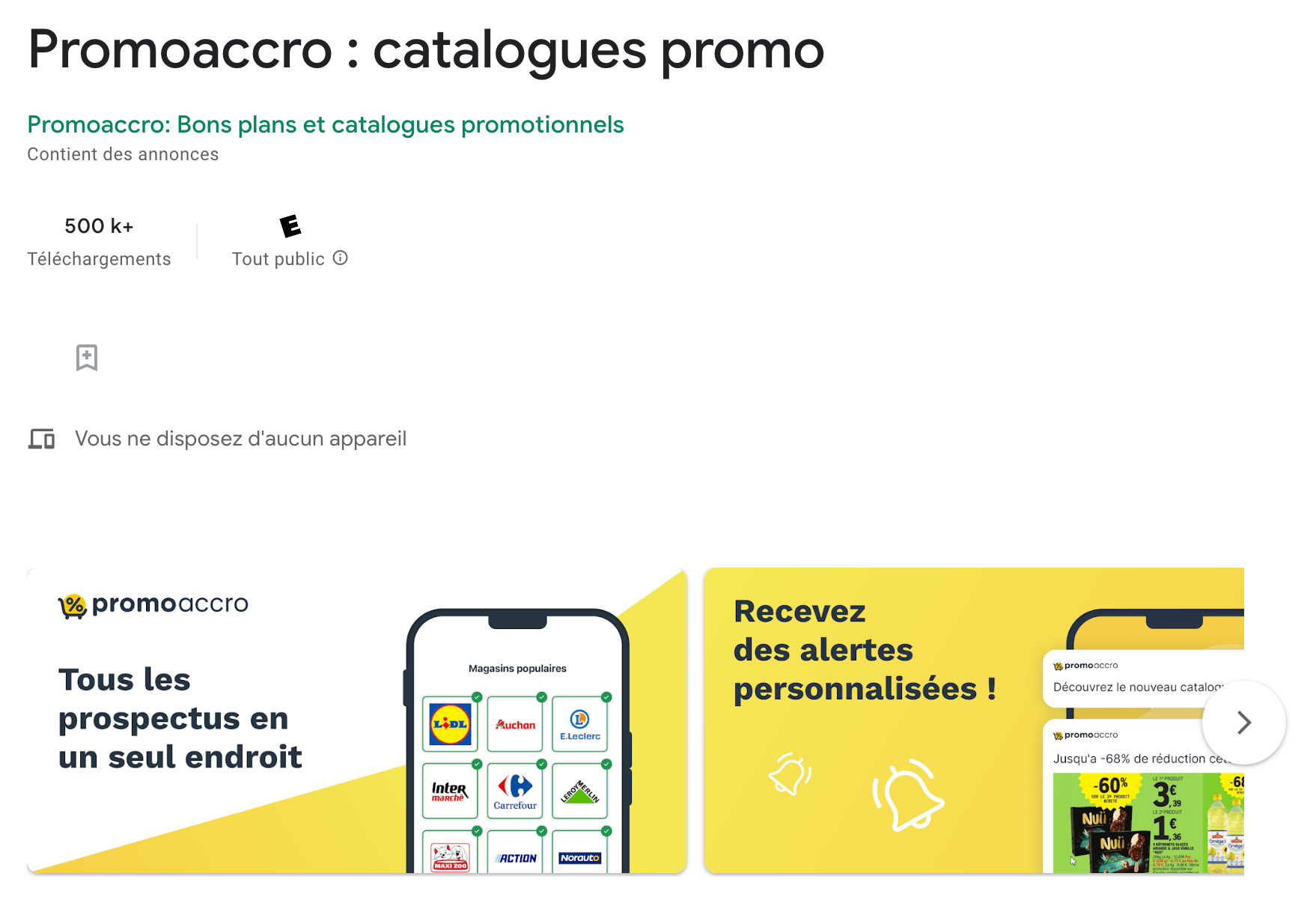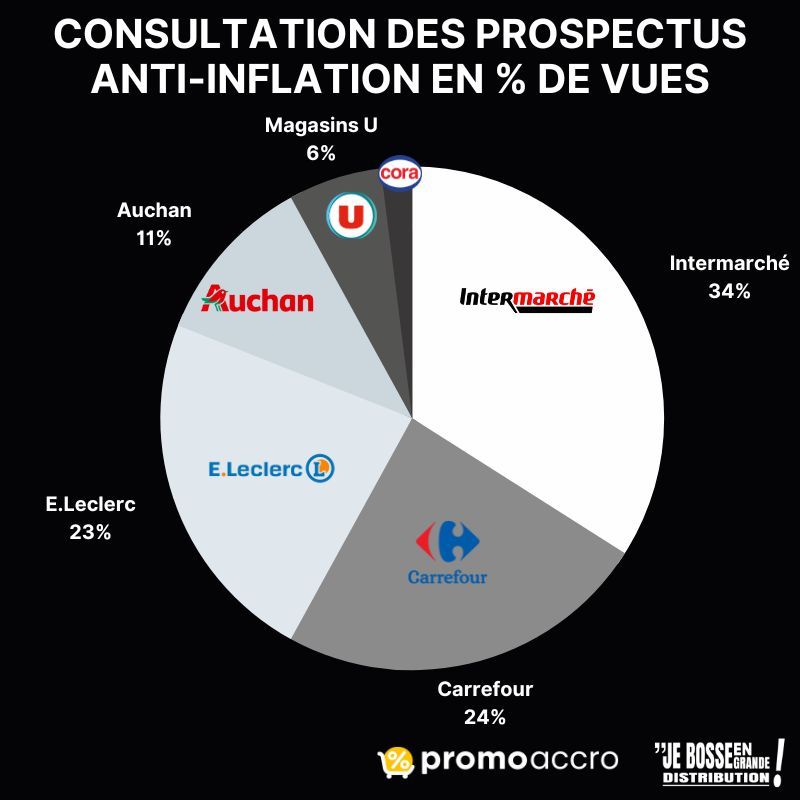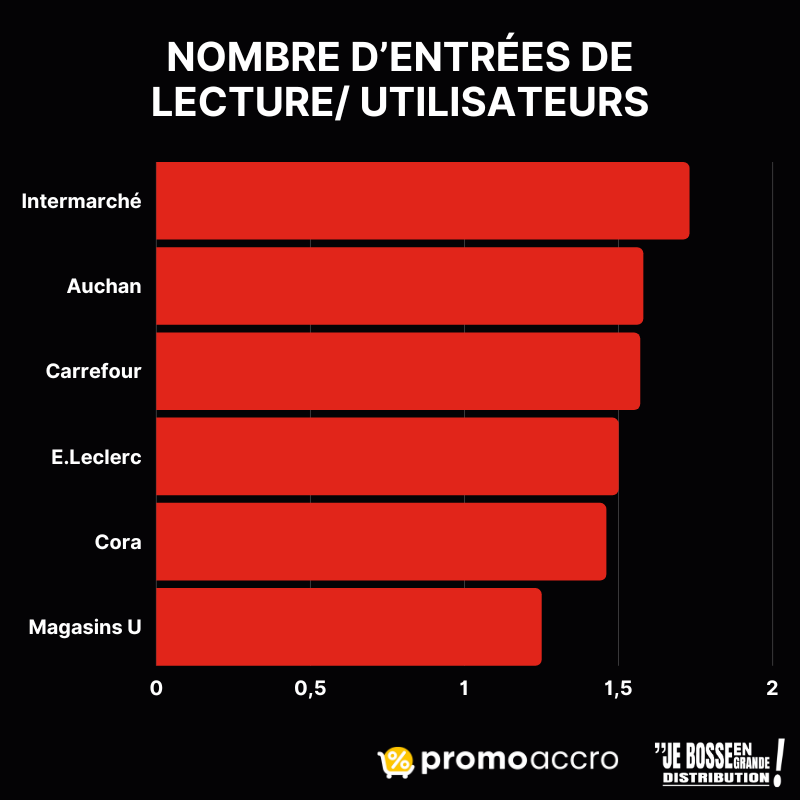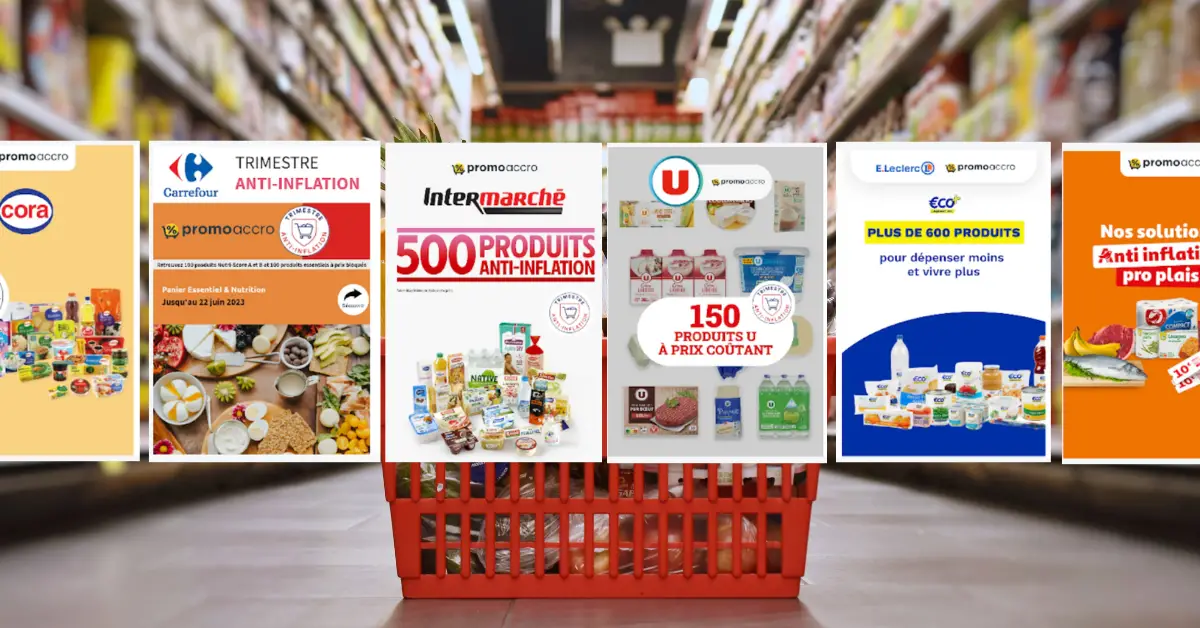The “anti-inflation challenge”, “products at cost”, “blocked prices”, there was no shortage of initiatives. These operations were also introduced after discussions with Bruno Le Maire in Bercy: “The government has reached an agreement with the big retailers, who have committed to introducing an ‘anti-inflation quarter’ from March,” the economy minister explained at the beginning of March. For three months, on the assortment decided by the brands, everyone committed to gobeyond its usual spring events.
These products, prospectus aggregator Promoaddict (one of the leading prospectors in France), brought them together virtual flyers create anti-inflation leaflet. This approach is unique and quickly gained popularity among the general public. The initiative did not go unnoticed by direct competitors, as numerous prospecting specialists took it up.
Promoaddict is an aggregator of prospectuses and good deals. Widely recognized by consumers, the Hvězdička app (4.7 stars on Google) allows them to discover local and national catalogs, compare offers, bargains and prepare purchases with a shopping list.
The app also stands out with its features that allow you to add a store to your favorites and receive notifications when a new catalog arrives. It is an essential addition to proprietary brand applications.

What lessons can we learn from these anti-inflation baskets?
These anti-inflation prospectus 100% online are rich in lessons in a context where, first, price remains a key factor in store occupancy and secondly the prospectus tends to be digital. With this online-only availability, we also learn a lot about customer behavior.
Here are the key lessons.
Most consulted catalogues: champions Intermarché, Carrefour and Leclerc
In the first hour, we compared which leaflets were the most viewed on the application. Three brands stand out: Intermarché, Carrefour and Leclerc*.
It should be noted that Leclerc arrived a little late compared to other brands. Its anti-inflation basket, which locks in the prices of 1,000 products, was released on April 3. This is almost a month later than Intermarché (“500 anti-inflation products” offered since March 6).
The champion in terms of consultations is therefore Intermarché. The volume of product offered partly explains the choice of consumers to turn to this online catalog.
For comparison, we list the number of blocked products by brand:
- Leclerc: 1000
- Intermarché: 500
- Intersection: 200
- Auchan: 150
- System U: 150
- Bark: 100

*E.Leclerc and his basket of “blocked prices”.
Prospectuses are mainly consulted between 6 pm and 10 pm.
It is not surprising that the catalogs can be viewed between 6 and 10 p.m. In itself, it is rather classic and corresponds to the habits of Internet users, whose traffic peaks are generally in the same niche.
However, where we can notice some subtleties is the anti-inflation prospectus of Carrefour and Système U, whose consumer behavior has changed significantly. We really see a big difference in consultations during the time slot of 18-20 hours.
Anti-inflation leaflets were mainly consulted by men (and this is an exception to the rule)
THE anti-inflation leaflet had 41% more male than female prospect entries compared to usual entries.
A statistic that may surprise, but can be explained: “in general, women are more active in reading prospectuses than men”, first explains Hubert Korzeniewski, director of Promoacro (RTB House Group), and recalls “in this context of anti-inflationary prospectuses, we observe an exception to the rule, because we have 41% more prospect entries than the usual average”.
Number of read records/users
With its “500 products against–inflation », Intermarché also wins the game based on the number of entries/users. The brand is just ahead of Auchan and Carrefour. Then follow Leclerc (he came a month later) and Cora.

Most searched product categories: milk and toilet paper at the top
On the topic of the most searched product categories on these online prospectuses, we learn that consumers are mainly looking for deals on milk and toilet paper.
Here are the top 3* most requested products by brand;
- Crossroads : Coffee, Toilet paper, Milk
- Intermarché : Toilet paper, cheese, milk
- Auchan : Cheese, butter, pasta
- E. Leclerc : spring water, milk, toilet paper
- U stores : Milk, vegetable oil, soy milk
💡
Note that the cheapest pack of toilet paper is available at Leclerc at €1.59 (36c/piece). And the most popular toilet paper on the other hand is Intermarché paper because it costs €2.79 per pack (the cheapest per unit, price 28c.).
*Source: Promoacro internal data, 5000 events and 3000 users 04-05/2023
Study methodology
Target : Users of the Promotetache app
Sample size: 100,000 users
blanket: Metropolitan France
Data collection period: April–May 2023
Stages of study:
- Creation of an anti-inflation prospectus for each brand that participated in this initiative.
- Publication of anti-inflationary prospectuses.
- Considered 30 days from the date of publication.
Terms of user consideration:
- Access to the Anti-Inflation Prospectus.
Note:
- During the study, Aldi changed its communication and the departure bin was modified. The offer of 25 starter items was removed from the website and anti-inflation fruit and vegetable baskets were offered.
- During the Anti-Inflation project, the Casino brand made do with a minimum list of articles in text form, user interest matched the brand’s marketing efforts.
- Lidl got involved “recklessly” with these 25 essential products from the original anti-inflation basket. The offer was not blocked for a period, but modified every Wednesday.
- E. Leclerc was indirectly involved in the anti-inflation initiative. After deciding not to participate, market and user pressure led E.Leclerc to create his bin at locked prices, albeit without the government logo. Source E. Leclerc

